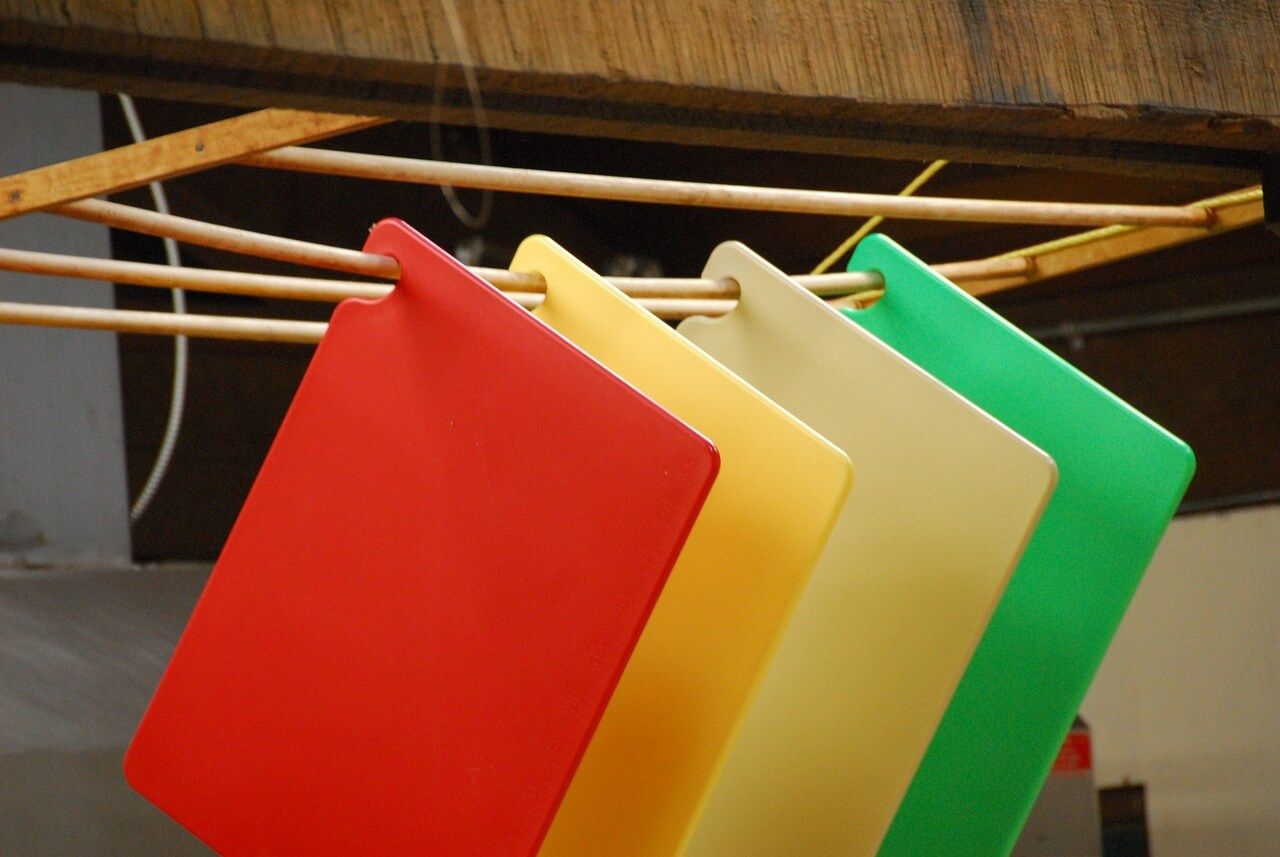In the heart of your kitchen, amidst the sizzling pans and simmering pots, lies an unsung hero: your cutting board. This culinary workhorse, whether it's made of wood, plastic, bamboo, or composite, requires proper care to ensure its longevity and your food's safety.
Let's delve into the world of cleaning and caring for your cutting boards.
In This Article
- The Importance of Cleaning Cutting Boards
- Cleaning Different Types of Cutting Boards
- Deep Cleaning and Disinfecting Cutting Boards
- How to Care for Your Cutting Boards
- Frequently Asked Questions
- Conclusion
- Further Reading
The Importance of Cleaning Cutting Boards
Cutting boards come into contact with various foods, from raw meats to fresh fruits and vegetables. Each interaction leaves behind microscopic remnants that can harbor bacteria, leading to cross-contamination.
Regular cleaning is important to maintain a hygienic kitchen environment and prevent foodborne illnesses.
Cleaning Different Types of Cutting Boards
Different materials require different cleaning methods. Let's explore how to clean each type of cutting board.
Cleaning Wooden Cutting Boards
Wooden cutting boards are loved for their durability and knife-friendly surface. However, they require special care. After each use:
- Wash the board with warm soapy water and scrub off any food residue.
- Avoid soaking the board or putting it in the dishwasher, as excessive water can cause warping or cracking.
- Dry the board thoroughly after washing to prevent bacterial growth.
Cleaning Plastic Cutting Boards
Plastic cutting boards are popular for their ease of cleaning.
They can be washed with dish soap and hot water or placed in the dishwasher.
However, deep grooves caused by knife cuts can become a breeding ground for bacteria. If your plastic board has deep cuts, it may be time for a replacement.
Cleaning Bamboo Cutting Boards
Bamboo cutting boards are known for their hardness and natural antimicrobial properties.
Like wooden boards, they should be hand-washed with warm soapy water and dried immediately.
Bamboo boards are less porous than wooden ones, making them less prone to water damage, but they should still not be soaked or put in the dishwasher.
Cleaning Composite Cutting Boards
Composite cutting boards, made from a combination of wood fibers and resin, offer a durable and knife-friendly surface.
They can be cleaned similarly to plastic cutting boards, with hot soapy water or in the dishwasher.
However, they should be dried thoroughly after washing to prevent warping.
Deep Cleaning and Disinfecting Cutting Boards
All cutting boards should undergo regular deep cleaning and disinfection regardless of the material.
This can be done using a solution of 1 tablespoon of bleach in 1 gallon of water. Let the board soak in the solution for a few minutes, then rinse with hot water and dry thoroughly.
For a more natural approach, a paste of baking soda and water can be used to scrub the board, followed by a rinse with a solution of vinegar and water.
How to Care for Your Cutting Boards
Beyond regular cleaning, cutting boards require periodic maintenance to keep them in good condition.
- Oil Your Boards: Wooden and bamboo boards benefit from regular oiling. Use food-grade mineral oil and apply a thin layer to the board's surface. This helps to seal the wood, preventing it from absorbing liquids and odors.
- Avoid Cross-Contamination: Consider using separate boards for different food types. For example, use one board for raw meats and another for fruits and vegetables. This can significantly reduce the risk of cross-contamination.
- Replace Worn Boards: Deep cuts or grooves can develop in your cutting board over time. These can harbor bacteria and are difficult to clean effectively. If your board is overly worn, it's time to replace it.
Frequently Asked Questions
How often should I clean my cutting board?
You should clean your cutting board after each use. Deep cleaning and disinfection should be done regularly, depending on how often you use the board and the types of food you prepare on it.
Can I put my wooden or bamboo cutting board in the dishwasher?
No, wooden and bamboo cutting boards should not be put in the dishwasher. They should be hand-washed and dried immediately to prevent warping or cracking.
How do I remove stains from my cutting board?
Stains on cutting boards can often be removed with a paste of baking soda and water. For stubborn stains, a bleach solution can be used.
How often should I replace my cutting board?
The lifespan of a cutting board varies depending on its material and how well it's maintained. However, any cutting board should be replaced if it develops deep grooves, warping, or a persistent smell.
Conclusion
Proper cleaning and care of your cutting boards are crucial for maintaining a hygienic kitchen and safe food preparation. Remember, each type of cutting board requires specific care, and regular maintenance can extend its lifespan.
Happy cooking!
Further Reading
- Cutting Boards: Importance of Separate Ones for Raw Meat - Dive deeper into the reasons behind using separate cutting boards for raw meat in this informative piece.
- Understanding Color-Coded Cutting Boards: The Role of Red - Learn about the color-coding system of cutting boards and the significance of the red board in this enlightening article.
- Discover the compelling reasons to choose bamboo for your next cutting board in CuttingBoard.com's insightful article, 'Top Five Benefits of a Bamboo Cutting Board.'
- If you're looking for the best cutting board for raw meat, check out our article on the top choices for raw meat cutting boards.



